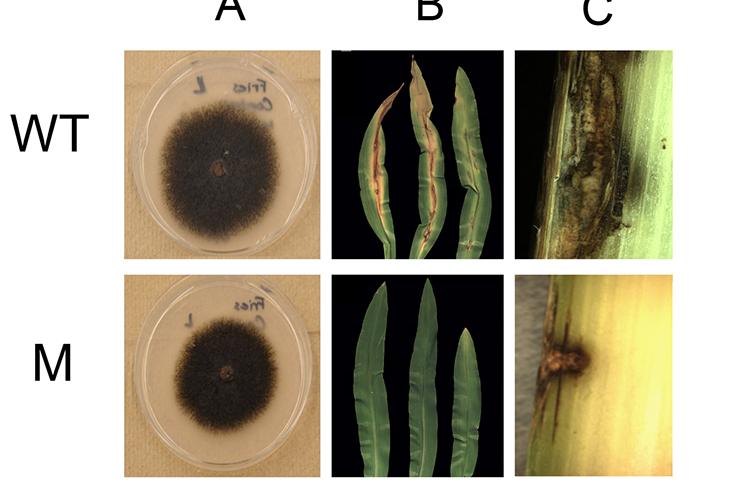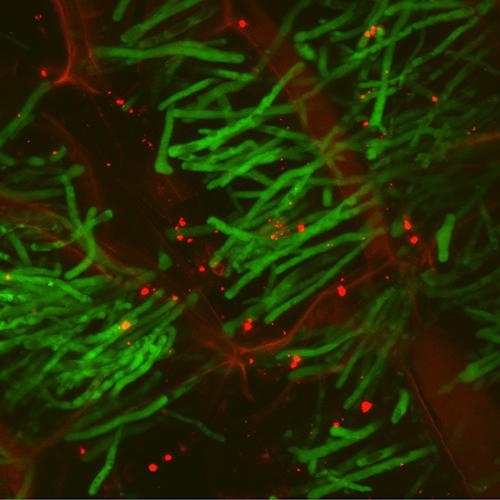Lexington, Kentucky, USA
August 6, 2018

Comparisons of the wild type anthracnose fungal disease (top) and the mutant anthracnose created in Lisa Vaillancourt's lab. Note the mutant does not cause disease in corn leaves or the stalk. Photo courtesy of Lisa Vaillancourt, UK plant pathologist.
Anthracnose stalk rot is a fungal disease of corn that can cause lodging and completely destroy a crop. It is ranked among the top three diseases that cause yield losses in corn each year. Lisa Vaillancourt, a University of Kentucky plant pathologist, has studied this disease for several years and is working toward a management solution.
Recently, Vaillancourt received a $1.25 million grant from the Plant Biotic Interactions Program, a joint venture between the U.S. Department of Agriculture and the National Science Foundation. The goal of the grant is to further examine an anthracnose mutant produced in her lab that is unable to cause the stalk rot disease in corn plants.

Anthracnose, in green, infects corn cells, in red, under a microscope. Photo courtesy of Lisa Vaillancourt, UK plant pathologist.
Vaillancourt has learned that the mutant is not able to secrete certain small proteins called effectors. Typically, these effectors shut down a plant’s defense system and allow the disease to spread throughout the plant. She is studying a specific protein that appears to regulate this process. While scientists have known about this protein’s existence as part of the secretory system in all living organisms except bacteria, little is known about its function, and a specific role in the regulation of effector secretion was not previously suspected.
“This project could give us insight into the basic biology of fungal secretion, and it could be a good target for controlling plant pathogenic fungi including biotrophic pathogens like rusts and mildew,” said Vaillancourt, a professor in the UK College of Agriculture Food and Environment’s Department of Plant Pathology.
As part of this project, Vaillancourt along with research collaborator Ken Jones, UK extension professor in the Department of Community and Leadership Development, will lead an outreach effort for middle school students and their teachers to give them a better understanding of the genetics of diseases and other biological processes. Many of the activities they engage in will be based on findings in her lab.